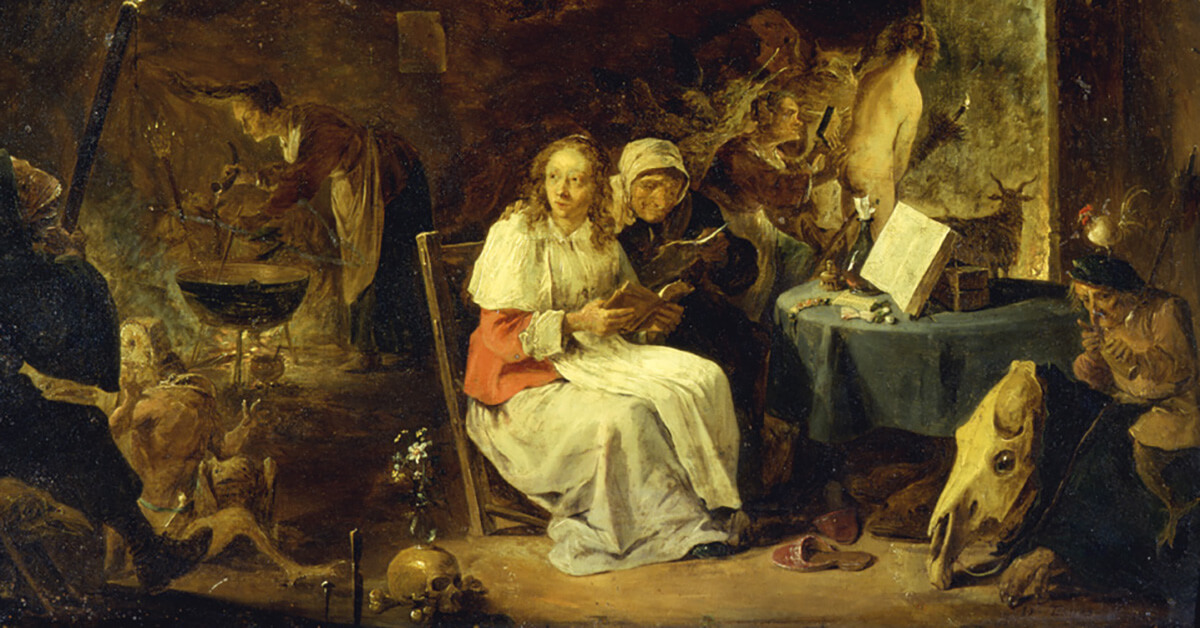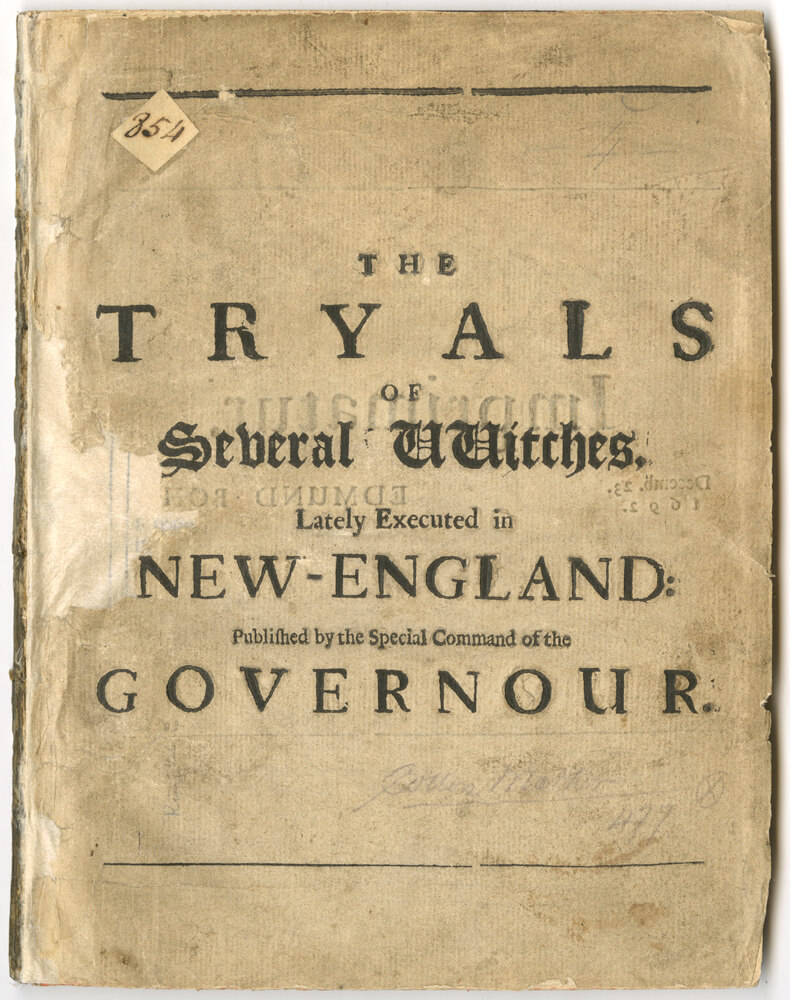
Specters of a Puritan Past: The Salem Witch Trials

A standard, yet powerful nighttime soundscape of sweeping winds, echoing footsteps, and rattling stagecoaches greets visitors before they enter the galleries showcasing a new exhibit hosted by the New-York Historical Society and organized by the Peabody Essex Museum. This aural effect conjures images of isolated settlements and dark woods, spaces where the line separating the natural and supernatural worlds thins. Lurking among the shadows are casters of spells and curses—witches threatening the tenuous civilization braced by God-fearing Christians—and their ever-seductive companion, the Devil himself.
This narrative provided an integral justification for the manic accusations and legal charges laid upon scores of men and women in the Puritan Massachusetts colony in 1692, resulting in the most sweeping witch hunt in colonial America. The Salem Witch Trials: Reckoning and Reclaiming offers a new examination and contemporary reimagining of this infamous event, situating it within the interlocking contexts of power, race, and gender.
The exhibit consists of three components or chapters: a history of the Salem Witch Trials chronicled through paintings, printed matter, documents, and material goods; art responding to its legacy with contrary perspectives; and a reflection on its impact in shaping American culture. Throughout the show, viewers are challenged to weigh uneasy questions of persecution and injustice deeply embedded in Americans’ shared experience and memory.

In 1692, Salem Village was beset by strife: its population staggering from a small-pox epidemic, fearing attacks from Native Americans, and absorbing a refugee population displaced by a recent war between the English and French colonies. Amid the paranoia, suspicion, and resentment brewing in this strained environment existed a very real belief in corporeal evil. The Devil waited in the thick forests of New England, hoping to convince souls to sign his black book.
Then, Elizabeth Parris and Abigail Williams, the daughter and niece of Reverend Samuel Parris, appeared to be seized by violent fits and assaulted by invisible entities. Witchcraft—both an illegal and sacrilegious act—was soon suspected and the search began for its practitioners. Tibuta, an indigenous Barbadian woman enslaved by the Parris family, was the first individual officially charged with being a witch, beginning months of public hysteria and trials. Ultimately, nineteen people were executed. Others died while imprisoned. Many of these victims were women deemed difficult, querulous, and contrary to the gender norms and expectations of Puritan New England.
The Salem Witch Trials excels in documenting the historical context of its subject. A 1669 edition of a fifteenth-century witch-hunting manual, Malleus Maleficarum, and a painting by Flemish artist David Teniers II, Incantation Scene, demonstrates the lingering fear of black magic in colonial New England. Handwritten testimonies chronicle the nightmares and specters tormenting the purported victims of Salem’s witches. Household objects such as a heavy chest and a weaving loom represent the everyday life of both the men and women swept up in the cycle of suspicions, prosecutions, and executions. This is the reckoning.

Featuring a study of In Memory of Elizabeth How, 1692, a 2007 fashion collection by the late designer Alexander McQueen, and photographs of contemporary self-identifying witches by Frances F. Denny, the reclamation chapter of the exhibition captures how artists continue to mine the historic events in Salem to explore the connections among religion, persecution, and society. The glamorous clothing of McQueen and the thoughtful portraits by Denny hint at an incongruous and unspoken element within the continuous fascination with Salem: a longing for magic and for a virtue in its powers.
The final segment of the exhibit stands as reflection on the witch trials’ lasting impact on American creative culture. Unfortunately, the exhibit does not attempt a full appreciation of the breadth of literature, film, and art which the Salem Witch Trials inspired, undercutting a driving theme of the show: the argument that these events comprise a pivotal historical moment and a framework for comprehending and combating societal wrongs and injustices. This flaw might be a product of the exhibition sacrificing focus for the desire to address multiple and not always clearly related themes.
Regardless of its weak points, The Salem Witch Trials is worth seeing as both a cultural offering designed for the autumn season and as a clear warning of the mania always coursing beneath the American body politic. The current socio-political landscape contains its own witches. Scholars exploring American history as anything but a heroic narrative are deemed hateful. Educators sympathetic to queer students are maligned as groomers. Librarians curating engaging book collections are attacked as corrupting. And media figures, public officials, and religious leaders are accused of belonging to a global Satanic cabal.
The panic of 1692 does not slumber in a long-ago past. It walks among us today.

